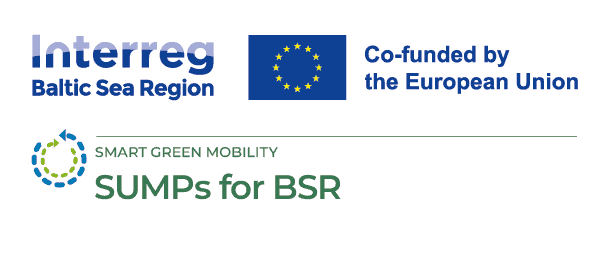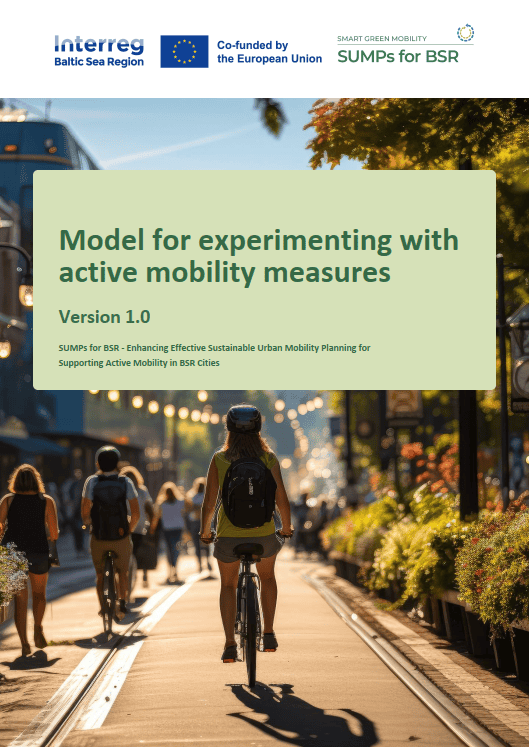
Transforming Urban Mobility: Introducing the Model for experimenting with active mobility measures
25 April 2024
The cities of the BSR are recognizing the importance of prioritising walking and cycling over car-centred plans to enhance mobility options. Nevertheless, large-scale infrastructure projects can be cumbersome and resource-heavy to implement, particularly for smaller cities with limited resources. In this project, we– mid and small-sized cities of the BSR together with the expert partners and the Union of the Baltic Cities, are aiming at effective and affordable ways to promote active mobility locally. We are convinced that by enhancing public spaces and supporting cycling and walking conditions, even with temporary measures, cities can make meaningful improvements in the long term. Moreover, conducting temporary experiments to showcase the benefits before committing to permanent changes can help avoid concerns and inform decision-making processes.
There’s significant potential in incorporating the regular use of temporary experiments into mobility planning. However, cities encounter several challenges in implementing such experiments, including the absence of a structured approach, aligning pilot objectives with strategic goals, effectively communicating with, and engaging local stakeholders in planning and implementation, evaluating experiments to ensure replicability and longevity, and transitioning successful experiments into permanent solutions.
To tackle the challenges Union of Baltic Cities Sustainable Cities Commission has, within the SUMPs for BSR project partnership, co-developed version 1.0 of the Model for experimenting with active mobility measures – a practical model to assist cities in testing innovative mobility solutions, with a focus on promoting active modes and experimenting in public spaces. The model acts as a holistic tool offering a roadmap for implementing successful small-scale mobility actions. It includes key steps such as needs assessment, planning and design, stakeholder involvement, implementation, monitoring and evaluation, replication planning and communication of the results. Insights from previous initiatives and actions have been utilised to include the best practices during the model’s development.
The first version of the model will be used to co-develop the plans for the implementation of local small-scale measures for active modes. This is being carried out through a series of peer-review workshops with consortium partners. The process commenced by organising a workshop during the project kick-off which touched upon the challenges and sought to share cities’ experiences with mobility-related experiments. Following the discussion, cities have been grouped into two separate teams based on similarities of their challenges, goals and approaches in local pilot activities. Through the implementation of local small-scale pilots, we’ll test and refine the model in diverse local contexts, validating its effectiveness and facilitating its widespread adoption. The actions span from improving bicycle infrastructure to transforming public spaces, our collective efforts will shape a more sustainable and inclusive urban future. Make sure to stay tuned to learn more about our actions in SUMPs for BSR project, co-funded by InterregBSR, on the way to a more sustainable future for our cities.






